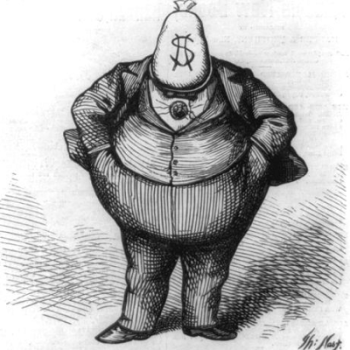I realize that sewers and storm drains aren’t terribly exciting or interesting, but life without them would be much more interesting, just not in a good way.
The situation of our sewer and storm-drain infrastructure is very much the same as that for our drinking water infrastructure, and the idea here is very much the same as we discussed earlier. The water is flowing in the opposite direction and it doesn’t smell as pleasant, but the potential for job-creation while accomplishing urgently necessary work is the same.
The pipes in America’s sewers and storm-drain systems are just as old as the pipes in our water delivery system and they become just as expensive to fix if we were to wait to do so until after they start breaking down. And that could be soon, as this is yet another part of America’s infrastructure on which we’ve been delaying and deferring maintenance in the name of lower taxes and/or due to the sort of dishonest budget shenanigans in which never getting your oil changed is sold to the public as “fiscally responsible car ownership.”
So our sewer and storm drain infrastructure is just as neglected and just as in need of immediate repair and replacement by just as many counties, cities and towns. And thanks to sky-high unemployment, those counties, cities and towns lack the revenue to pay for this work.
This is work needing and waiting to be done, but left undone at the very same time that millions of Americans are in desperate need of work to do. We could, tomorrow, hire all 14.6 million unemployed Americans as federal sewer and storm drain corps workers, simultaneously achieving full employment and getting our failing infrastructure into shape for the next 50 years.
Well, almost. It’s not quite that simple, obviously. The skill sets of every one of those 14.6 million unemployed won’t match up with the skills required for this work. Nor are they all geographically distributed in a way that neatly corresponds with the needed work. But many — a million, perhaps? 500,000? 100,000? — do have such skills, or similar-enough skills that they could quickly be trained, and there’s no reason not to put them straight to work on this. Tomorrow.
Tuesday at the latest.
Seriously, they could be getting started — getting to work — almost that quickly.
Remember those “1,400 requests for drinking water projects” from town managers in the state of Ohio? Those town managers — and managers, mayors and county executives in every state — have a similar wish-list of ready-to-go sewer and storm drain projects too.
There are only two things stopping us from getting started on this project: 1. The cost; and 2. The belief that America is fundamentally incompetent and must therefore have small, cramped, tiny aspirations because it deserves shoddy infrastructure and a crappy economy that would be swirling down the drain if we could find a drain that worked.
We’ll get to that second objection in a later post, but for now let’s just consider the objection of cost.
The cost of this work, right now, is cheaper than it would ever be at any other time. Because of the aforementioned sky-high unemployment, we don’t have to worry about competing to find workers to do the job. And because that sky-high unemployment has investors fleeing stocks for the safety of government securities, the government can borrow money at next-to-nothing to pay for this work. That sky-high jobless rate also means no wage pressure for any credible fear of inflation, so what the heck, under these conditions, the government could print money to pay these workers.
Keep in mind we’re not just talking about ditch-diggers on the government tab. These kinds of projects also create private-sector jobs as, for example, the pipe-makers start hiring new shifts of workers to meet the increase in demand.
This is work that needs doing at a time when work is needed so —
DEFICITS! ZOMG!1! DEFICITS!!1!!
Yes, OK, calm down please. We’re accounting for that.
See the biggest current cause of federal and state deficits is unemployment.
Let me repeat that to double the odds of this finally sinking in:
The biggest current cause of federal and state deficits is unemployment.
First there’s the massive reduction in tax revenue from the 14.6 million Americans unable to find work. Then there’s the expense of paying their unemployment benefits. For every one of those 14.6 million who finds a new job revenue goes up and spending goes down and the deficit shrinks.
If you’re worried about deficits right now, you need to be worrying about unemployment. If you so worried about deficits right now that you think we can’t afford to do anything about unemployment, well then let me try a third time:
The biggest current cause of federal and state deficits is unemployment.
At the current pace of private-sector job creation, we will be running an unemployment-driven deficit for about the next 20 years. That’s fiscally irresponsible.
Many people are unable to grasp this because finding work for the unemployed is pleasant. It makes everyone involved happy — joyous, even. And these people believe that deficit-reduction must always be painful and nasty and unpleasant. Any deficit reduction that does not also involve a corresponding increase in unhappiness just doesn’t count in their view.
They’re the same sort of people who believe that a healthy diet must taste like straw or else it can’t possibly be good for you. You know the type. They shouldn’t be allowed in charge of the budget any more than they should be allowed in charge of the kitchen. Follow their advice and unemployment will stay sky-high, producing ever-larger deficits, which in turn will force the further deferral of the maintenance of our sewer and storm-drain infrastructure until finally some of the millions of unemployed may find work cleaning up the raw sewage backing into basements. The re-invention of the dung-cart and gutter-sweep industries, however, probably won’t create enough jobs to replace those lost in beach towns due to beach closings every time it rains, or the watermen out of work due to fish-kills, or the thousands of others whose jobs depend in part on our being a nation with a functioning infrastructure.
So, to recap: The eat-your-straw crowd is advocating continued high unemployment, decades of huge deficits and raw sewage in your basement (for those lucky enough to still have a basement).
I’m supporting the alternative to that, which says that when we have A) work that needs to be done, and B) people who need work to do, then we don’t actually have two problems, we have one obvious solution.












